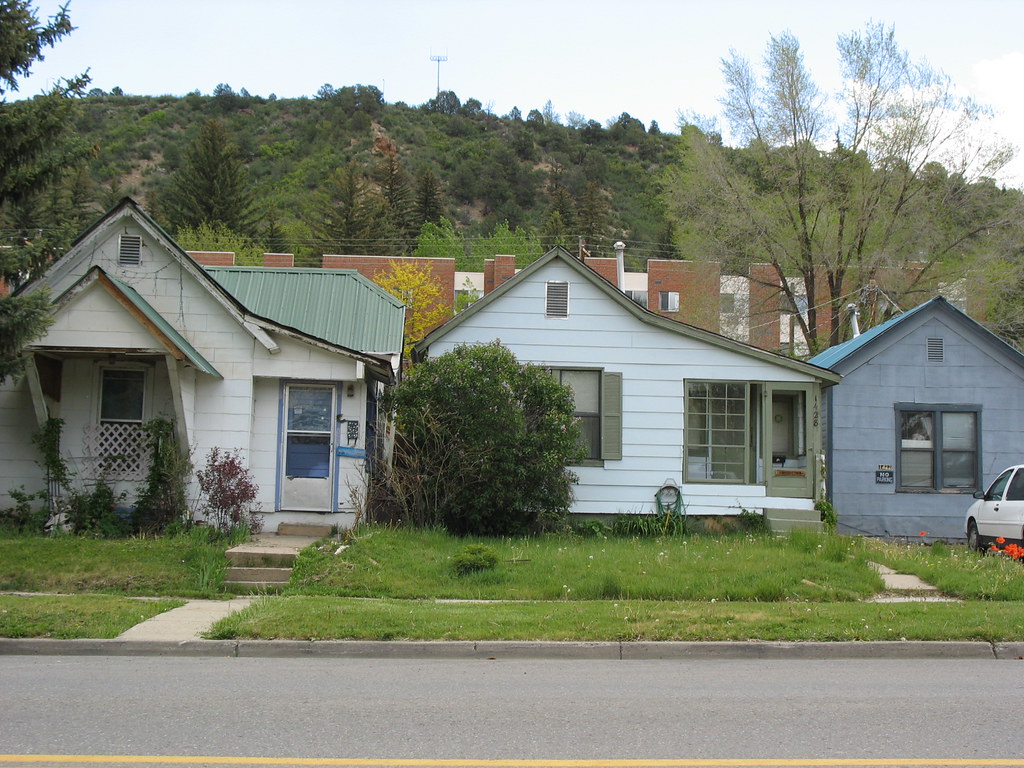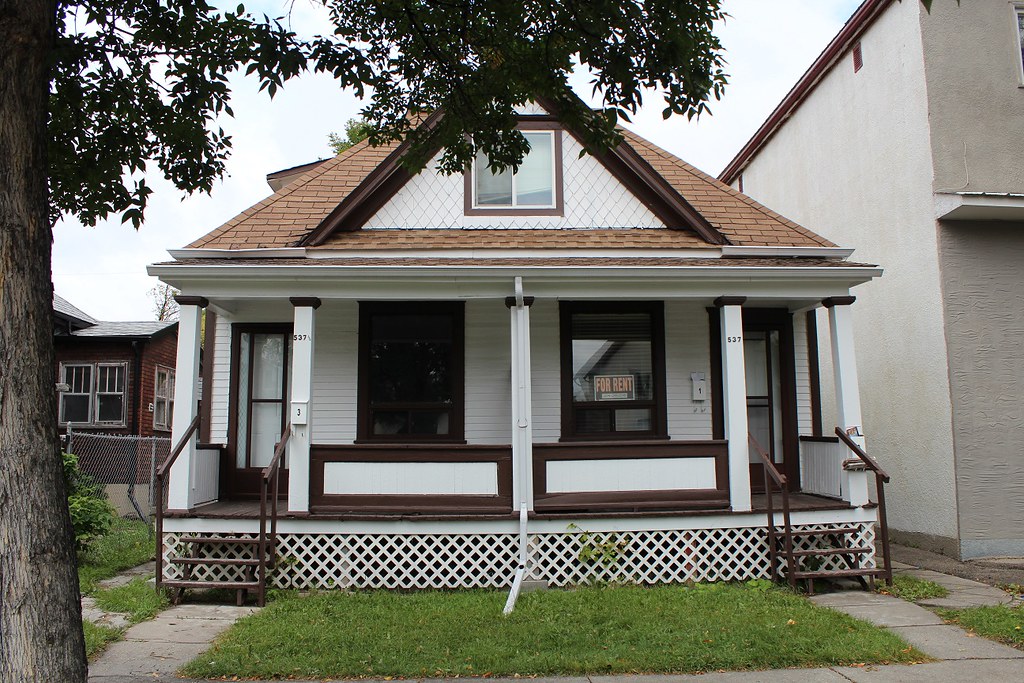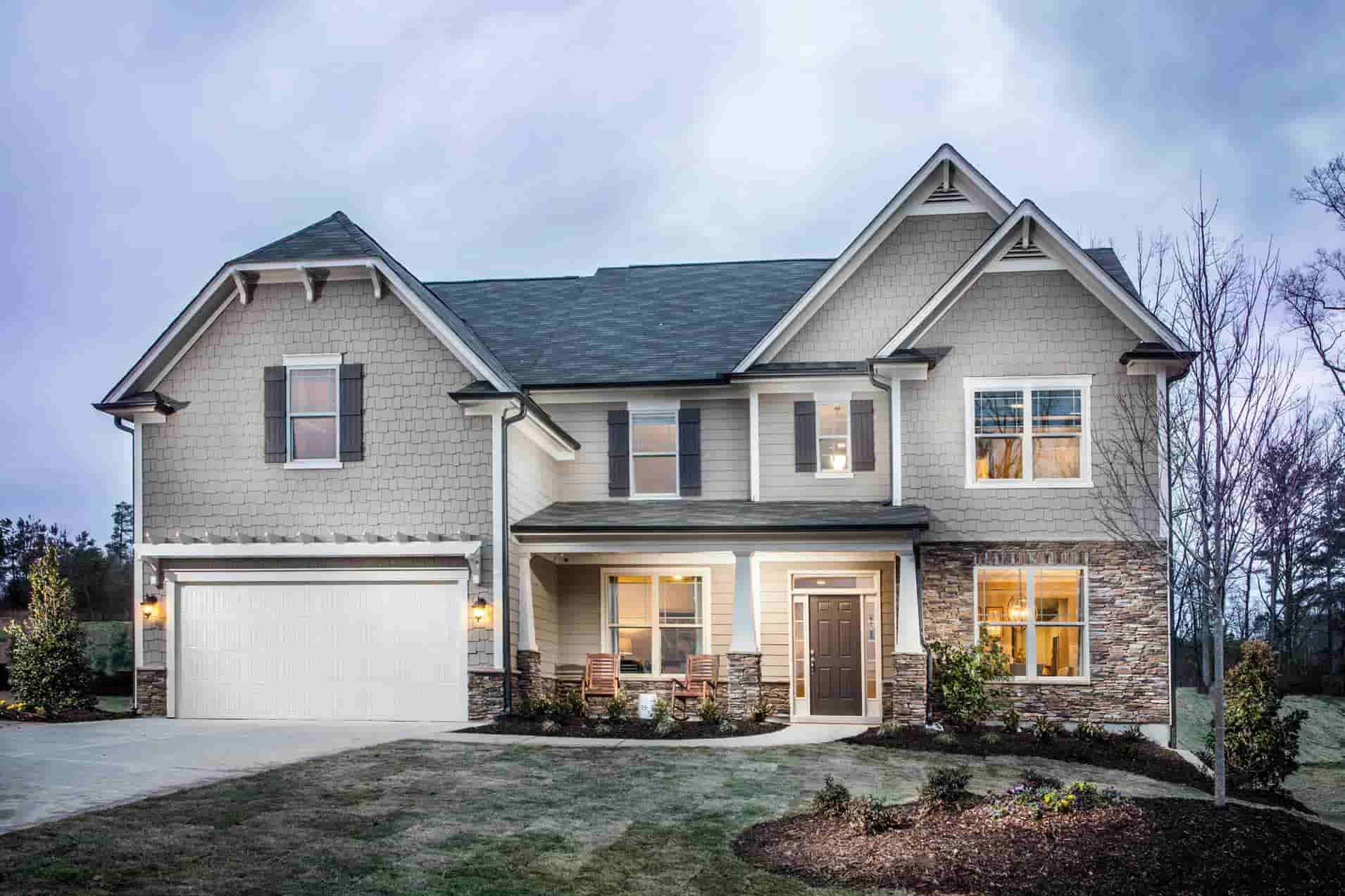The U.S. housing market has been a landscape of mixed signals, presenting a complex challenge for potential homebuyers and renters alike. While mortgage rates have shown some reduction from their 2023 peaks, they remain elevated enough to significantly impact affordability. Simultaneously, home prices have demonstrated a stubborn resilience, often defying predictions of a cooldown, even as inventory has seen only slight improvements.
National figures often tell only part of the story, acting as a broad brushstroke that can obscure crucial regional nuances. For instance, the national median existing-home sales price rose 2.0% year-over-year to $422,600, with an inventory of 1.53 million homes representing a 4.6 months’ supply. These numbers, however, do not adequately capture the stark realities unfolding in specific metropolitan statistical areas (MSAs) where housing costs have spiraled far beyond what local incomes can reasonably support. This disparity is particularly evident when comparing monthly housing costs to national median per capita income figures.
In this in-depth analysis, we pivot from the national overview to scrutinize 15 of the most overvalued U.S. housing markets projected for 2026. Our focus is squarely on providing data-driven insights, drawing directly from the U.S. News Housing Market Index and expert perspectives. We aim to equip readers with practical, actionable information, shedding light on the critical factors—from supply-side constraints and geographical limitations to intense demand from various buyer segments—that render these markets significantly overvalued and challenging for the typical resident.

1. **San Francisco-Oakland-Hayward, California: Tech Hub Prices and Supply Shortages**The San Francisco-Oakland-Hayward MSA remains a perennial fixture on lists of overvalued markets, with a payment-to-income ratio of 68.3% for homebuyers. This staggering figure reflects a market where years of housing supply have simply not kept pace with robust job growth, particularly in the booming technology sector. The imbalance between available homes and an expanding workforce has consistently driven prices upward, making homeownership a distant dream for many.
This persistent lack of affordable housing has tangible consequences for residents. Many are forced to adopt coping mechanisms, such as doubling up with roommates to share exorbitant housing costs, which in turn adds to competition for already limited resources like parking spaces. Others face the difficult decision of commuting longer distances from more affordable areas or, in some cases, are compelled to leave the state altogether in search of better economic opportunities and a more manageable cost of living.
The challenge extends beyond purchasing. For those contemplating the financial implications of homeownership versus renting, the San Francisco-Oakland-Berkeley area presents a significant disparity. The cost to own a home here is an astounding 41.7% higher than renting. This substantial gap highlights the immense premium placed on homeownership in this high-demand region, pushing it out of reach for many who do not possess substantial existing equity or considerable wealth.

2. **Riverside-San Bernardino-Ontario, California: The Inland Empire’s Affordability Crisis**Moving inland from the immediate coast, the Riverside-San Bernardino-Ontario MSA, often referred to as the “Inland Empire,” records a payment-to-income ratio of 67.8% for homebuyers. This places it among the top most overvalued markets, underscoring the pervasive nature of California’s housing challenges even outside its most prominent coastal cities. The dynamics here mirror those seen in other parts of the state: a chronic failure of housing supply to keep pace with job growth, leading to inflated prices.
This market is not only significantly overvalued for prospective buyers but also for renters. The income-to-rent ratio in Riverside-San Bernardino-Ontario is a substantial 56.5%, indicating that a significant portion of local per capita income is consumed by rental payments. This pressure affects a wide swath of the population, from first-time renters to families, making it difficult to save or achieve financial stability.
The Inland Empire has seen considerable population growth in recent years, partly as residents from more expensive coastal areas seek relative affordability. However, this influx of demand, coupled with insufficient new construction, has driven up prices and rents across the board. The result is a region where even the “more affordable” option within Southern California has become prohibitively expensive for a large segment of its working population.

3. **San Diego-Carlsbad, California: Coastal Demand Meets High Costs**The San Diego-Carlsbad MSA is another California market grappling with severe overvaluation, evidenced by a payment-to-income ratio of 66.3% for those looking to purchase a home. This coastal gem, renowned for its desirable climate and vibrant economy, faces the same fundamental issue as its Californian counterparts: housing supply has consistently lagged behind job growth and population increases, fueling a relentless ascent in property values.
The problem of affordability is equally pronounced in the rental market. For tenants in the San Diego-Chula Vista-Carlsbad area, the rent-to-per-capita-income ratio stands at 43.1%. This means a considerable portion of residents’ monthly income is dedicated to housing, well above the national median, leaving less disposable income for other necessities and savings. This pressure contributes to a challenging economic environment for many households.
Furthermore, the disparity between owning and renting highlights the steep barrier to homeownership. In this MSA, the cost to own a home is 23.2% higher than renting. This substantial difference reinforces the financial advantages of renting over buying for many residents, at least in the short term, but it also reflects the profound imbalance in the market. Such a gap often means that homeownership is primarily accessible to those with significant financial resources or existing home equity.

4. **Los Angeles-Long Beach-Anaheim, California: Megacity Pressures and Income Disparities**As one of the largest and most iconic metropolitan areas in the U.S., the Los Angeles-Long Beach-Anaheim MSA is no stranger to high housing costs, registering a payment-to-income ratio of 66.0% for homebuyers. This region exemplifies the acute challenges faced by major urban centers where sustained demand, limited developable land, and a historical shortfall in housing construction create an environment of extreme overvaluation.
The situation for renters is equally challenging, with an income-to-rent ratio of 41.3%. This implies a substantial financial burden on a significant portion of the population, especially in a city with diverse income levels. The constant influx of people drawn by economic opportunities and cultural attractions clashes with a housing stock that simply cannot accommodate the demand at affordable price points.
Recent catastrophic events have only exacerbated these existing pressures. The estimated loss of 12,000 structures in recent Los Angeles area fires will undoubtedly compound the high costs for both prospective buyers and current renters. Such a reduction in available housing units in an already constrained market is likely to intensify competition and further inflate prices, making the dream of stable housing even more elusive for many.
For those weighing the pros and cons of purchasing versus renting, the Los Angeles market also presents a stark reality. The cost to own is 24.7% higher than renting, indicating a significant premium associated with property ownership. This considerable difference reflects the challenges in accumulating the necessary capital for a down payment and managing ongoing mortgage expenses in this high-cost urban environment.

5. **Urban Honolulu, Hawaii: Rental Market Stresses in Paradise**Beyond the specific pressures seen in the Kahului MSA, Urban Honolulu also stands out as a significantly overvalued market, particularly for renters. With an income-to-rent ratio of 43.0%, residents of Hawaii’s capital city face substantial financial strain. This ratio significantly surpasses the national median of 32.0%, highlighting the severe affordability crisis in what is often perceived as a picturesque paradise.
The challenges in Urban Honolulu are intrinsically linked to the broader Hawaiian housing crisis, characterized by high demand from both local residents and out-of-state buyers. These external pressures often stem from a desire for vacation homes or investment properties, which inadvertently contribute to a scarcity of long-term affordable housing options for the local population. This competition drives rental rates upwards, disproportionately affecting those whose incomes are tied to the local economy.
In response to these pervasive issues across the state, Hawaii Gov. Josh Green has implemented a series of data-driven priorities aimed at addressing the housing crisis. These initiatives include expanding affordable housing inventory, maintaining existing affordable units, and offering more housing support to local residents. Furthermore, efforts are underway to coordinate and modernize Hawaii’s housing development process and to communicate the urgency of the crisis to all stakeholders. These measures, if successful, could eventually provide some relief to the burdened rental market in Urban Honolulu and other Hawaiian MSAs.

6. **New York-Newark-Jersey City, New York: Iconic Urban Costs and Limited Supply**The New York-Newark-Jersey City MSA represents another pinnacle of housing overvaluation, primarily driven by its status as a global financial and cultural hub. The sheer density of economic opportunity and population concentration within a finite geographical area creates unparalleled demand for housing. This intense competition translates into some of the highest housing costs in the nation, affecting both buyers and renters.
The structural housing shortage in this megacity region is deeply entrenched, stemming from decades of underbuilding relative to sustained population and job growth. Land is at an extreme premium, and development projects often face significant regulatory hurdles and community resistance, making it exceedingly difficult to add new inventory at scale. This persistent supply-demand imbalance is a core driver of its overvalued status.
For those considering purchasing a home within this vast metropolitan area, the financial demands are substantial. Consistent with other highly overvalued major MSAs, the New York region exhibits payment-to-income ratios significantly above 45%, indicating that mortgage costs consume a disproportionately large share of local incomes. This reality often limits homeownership to those with considerable existing wealth or extremely high incomes.
The impact on renters is equally profound, with the MSA featuring prominently on lists of overvalued rental markets. While specific ratios can vary, the pervasive high rents force many residents to dedicate a significant portion of their income to housing, often leading to innovative, if sometimes challenging, living arrangements to manage costs. The New York market thus serves as a powerful example of overvaluation rooted in a deeply constrained urban environment.

7. **Greeley, Colorado: A ‘Zoomtown’ Feeling the Affordability Strain**Greeley, Colorado, stands as a prime example of a ‘Zoomtown’ that has experienced significant housing market shifts. These communities, often appealing for their quality of life, natural beauty, and perceived affordability relative to larger urban centers, saw an unprecedented surge in demand during and after the pandemic as remote work became widespread. This influx of new residents, often from higher-cost areas, has rapidly redefined their housing markets.
Initially, Greeley offered a more accessible alternative to Denver or Fort Collins, drawing individuals and families seeking more space and a lower cost of living. However, this increased demand, coupled with local housing inventory that was not prepared for such rapid expansion, quickly eroded any prior affordability advantages. Home prices and rental rates began to climb, pushing the market into an overvalued status for many long-time residents.
The unique appeal of Greeley, including its proximity to outdoor recreational opportunities and a more relaxed pace of life, continues to attract buyers. Yet, this regional desirability, combined with the lingering effects of remote work trends, means that the market remains highly competitive. For local wage earners, the rapidly escalating housing costs present a significant challenge, creating a growing disconnect between earning power and the cost of housing.
Experts note that ‘Zoomtowns’ like Greeley represent a distinct category of overvalued markets where the driving force is often a lifestyle migration rather than solely localized job growth. While national predictions for 2026 suggest some moderation in overall price growth, the underlying demand in these regionally appealing areas, coupled with supply lagging behind, ensures that they remain significantly overvalued for typical buyers and renters.

8. **Fort Collins, Colorado: Rocky Mountain High Costs for Local Incomes**Another Colorado ‘Zoomtown’ facing substantial overvaluation is Fort Collins. Renowned for its vibrant community, proximity to the Rocky Mountains, and a strong local economy, Fort Collins has long been a desirable place to live. However, like Greeley, it has experienced intensified housing pressures due to its increasing appeal to remote workers and those seeking a high quality of life outside of mega-cities.
The dynamics in Fort Collins mirror those of other ‘Zoomtowns’: a relatively stable supply of housing that has been overwhelmed by a surge in demand from both within the state and from out-of-state buyers. These buyers, often leveraging equity from sales in more expensive markets, have the financial capacity to compete fiercely, driving up prices beyond what local incomes can comfortably support.
The result is a market where homeownership, and even renting, has become increasingly challenging for those whose livelihoods are tied directly to the local economy. The premium placed on living in a scenic and desirable location like Fort Collins translates into higher payment-to-income ratios for potential buyers and elevated rent-to-income ratios for tenants, pushing the market into overvalued territory.
Despite national market predictions suggesting a slight softening, the inherent appeal and limited buildable land in areas like Fort Collins mean that affordability challenges are likely to persist. The market’s resilience, driven by its regional charm and continued migration patterns, makes it a key example of an overvalued area where demand outpaces supply, creating a difficult environment for average households.

9. **Boise, Idaho: The Allure and the Growing Affordability Gap**Boise, Idaho, has emerged as another prominent ‘Zoomtown’ that has seen its housing market dramatically reshaped by recent demographic shifts. Its reputation for outdoor recreation, a burgeoning tech scene, and a relatively lower cost of living compared to coastal cities made it a magnet for individuals and families relocating for remote work opportunities. This swift influx of new residents, however, has had a profound impact on local housing affordability.
The rapid increase in demand quickly outpaced the existing housing supply, pushing home values and rental rates upward at an accelerated pace. While Boise’s growth brought economic vitality, it also created an affordability gap, making it difficult for many long-term residents and local workers to compete in the increasingly competitive housing market. This trend is a hallmark of ‘Zoomtowns’ experiencing overvaluation.
For those considering a move to Boise or already residing there, the financial implications are significant. The market now presents payment-to-income and rent-to-income ratios that place a substantial burden on typical household budgets. The balance between local wages and housing costs has shifted, signaling an overvalued market where entry for new buyers or renters without substantial financial backing is increasingly challenging.
As the housing market continues to stabilize nationally, the unique pressures in ‘Zoomtowns’ like Boise underscore the importance of local market analysis. While a national crash is deemed unlikely, these specific regions face ongoing challenges rooted in persistent demand and lagging supply, making them areas where caution is advised for those seeking long-term affordability.

10. **Florida: The Undercurrents of Overvalued Rental Markets**Beyond the specifically named metropolitan areas, the state of Florida features prominently in the national conversation about overvalued housing markets, particularly for renters. While individual MSAs are not explicitly detailed in the top lists, the broader context highlights Florida as a state where income-to-rent ratios are often substantially above the national median of 32.0%. This indicates widespread rental market pressures across various regions.
Florida’s appeal as a prime destination for tourism, retirement, and seasonal residents is a significant driver of these trends. The constant demand from out-of-state individuals seeking vacation homes or investment properties contributes to a dynamic similar to that observed in Hawaii. These external pressures inflate rental rates, often creating a scarcity of long-term affordable housing options for the local workforce whose incomes may not keep pace.
The challenge for renters in Florida is exacerbated by a confluence of factors, including population growth, limited inventory of affordable housing, and the widespread practice of converting long-term rentals into more lucrative short-term vacation units. These dynamics collectively push rental costs upward, leaving many residents with a disproportionately large share of their income dedicated to housing.
As a result, while specific city-level data is not always highlighted, the overarching trends indicate that Florida’s housing market, particularly its rental segment, merits careful consideration. The interplay of regional desirability, investor interest, and supply constraints ensures that many areas within the state remain significantly overvalued for the typical tenant, presenting a persistent affordability hurdle.

11. **South Carolina: Regional Charm and Escalating Rental Costs**Similar to Florida, South Carolina is identified in the broader national analysis as a state with notable overvalued rental markets. This trend reflects the state’s growing popularity, driven by its scenic beauty, desirable coastal areas, and a burgeoning appeal to new residents seeking a different quality of life. However, this regional charm comes with a significant trade-off in housing affordability, particularly for those in the rental sector.
The influx of new demand, often from out-of-state buyers and renters drawn by the state’s appeal, has placed considerable strain on existing housing inventory. This increased competition, mirroring dynamics seen in other popular destination states, contributes to rental rates that climb faster than local per capita incomes. Consequently, a substantial portion of residents’ monthly earnings is absorbed by housing expenses, well above national benchmarks.
The overvaluation in South Carolina’s rental markets can be attributed to several factors, including insufficient new construction to meet surging demand, geographical limitations in certain desirable areas, and the presence of investment properties that often cater to short-term visitors or generate passive income for owners. These elements collectively limit the availability of affordable, long-term rental options for the permanent population.
For individuals and families residing in or considering a move to South Carolina, understanding these rental market pressures is crucial. The expert insights on overvalued markets highlight that while the state offers many attractions, the cost of housing, particularly for renting, has become a significant financial burden for many, signaling a market where caution and diligent financial planning are paramount.

12. **Utah: Navigating the High Cost of Homeownership Versus Renting**Utah stands out in the national housing discussion as a state where the cost to own a home commands a substantial premium over renting. While specific metropolitan areas are not individually detailed in the top overvalued lists for purchasing, the statewide trend indicates that potential homebuyers face a significant financial hurdle when comparing ownership costs to rental expenses. This disparity reflects a market grappling with intense demand and specific supply challenges.
The state has experienced considerable population growth in recent years, driven by both economic expansion and its high quality of life. This robust demand for housing, coupled with the inherent complexities of new construction and limited available land in desirable areas, has consistently pushed property values higher. As a result, the financial outlay required for a mortgage, including principal and interest, far exceeds what typical incomes can comfortably support when weighed against rental alternatives.
This significant premium on homeownership in Utah implies that, for many, renting remains the more financially prudent option in the short to medium term. The barrier to entry for buyers often involves substantial down payments or reliance on considerable existing equity, effectively limiting homeownership to those with stronger financial footing. Such a market dynamic is a clear indicator of overvaluation from an affordability perspective for a large segment of the population.
As the broader housing market moves toward a more balanced state, the situation in Utah underscores how local factors can lead to persistent overvaluation in specific segments. For potential homeowners, the high ownership premium necessitates careful consideration and long-term financial planning, making it essential to evaluate the total cost of ownership against the more immediate affordability of renting in the state.
The U.S. housing market’s journey through 2026 is undoubtedly a complex tapestry woven with threads of opportunity and challenge. As our exploration of these 15 overvalued markets illustrates, the national narrative of stabilization often masks profound regional disparities. From the sun-drenched shores of Hawaii to the vibrant tech hubs of California and Washington, and extending into the emerging ‘Zoomtowns’ and popular destination states, the common thread is a relentless interplay of demand, supply, and affordability. While a national housing crash appears unlikely, with prices showing resilience and inventory modestly improving, the imperative for both buyers and renters is clear: informed decision-making based on granular, data-driven insights into local market dynamics. Understanding these overvalued pockets is not just about avoiding pitfalls, but about strategically positioning oneself in an ever-evolving real estate landscape. The market may be transitioning, but the underlying forces driving regional overvaluation remain potent, necessitating continued vigilance from all stakeholders.




:max_bytes(150000):strip_icc()/kendalljennermain-ab323487a6d443ebac83e4862ae10a0b.jpg)